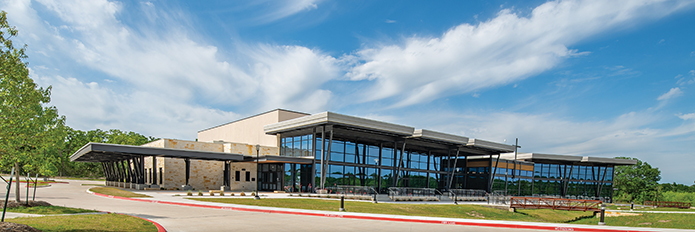
Testing the waters
With its nature-sensitive, yet ministry-oriented design, Grace Creekside is the ‘brand standard’ for future campuses of this rapidly growing multi-site church.
By RaeAnn Slaybaugh
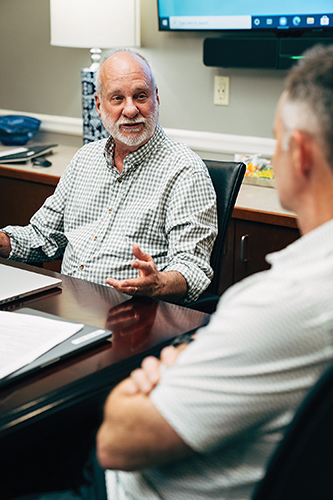 Buck Anderson is no stranger to navigating uncharted waters. In fact, he enjoys it.
Buck Anderson is no stranger to navigating uncharted waters. In fact, he enjoys it.
From 1990 to 2006, Anderson was the academic dean at the College of Biblical Studies (CBS) in Houston. During his tenure, the college established a one-year Bible Institute and a four-year bachelor’s program. It even attracted his alma mater, Dallas Theological Seminary, to establish its Houston extension for its master’s program, there.
Meanwhile, a page was turning in the Anderson family. Buck and his wife Valerie’s oldest daughter had recently enrolled at Texas A&M in College Station, about 90 minutes away. Their two other daughters were at an age where similar decisions loomed large.
So, the desire for change was in the air when the Operations & Leadership Development Pastor position opened up at Grace Bible Church in College Station — a church pastored by Anderson’s seminary friend, Brian Fisher.
For one thing, Anderson says, he felt like he’d already helped to build the college he’d envisioned. “I could’ve stayed at CBS, but I’m kind of a builder, an entrepreneur. I like to do new things.”
Plus, he says he was “astounded” by the efforts Grace Bible Church made to minister to college students. “Having daughters that were college students, or were going to be, I was particularly interested.”
The writing was on the wall: in August 2006, Buck and Valerie relocated to College Station to begin a brand-new adventure.
Right intentions, wrong approach
One of Anderson’s first assignments was overseeing the creation of Grace Bible Church’s second campus, Southwood. Primarily a renovation project, it was a great fit for him in several ways.
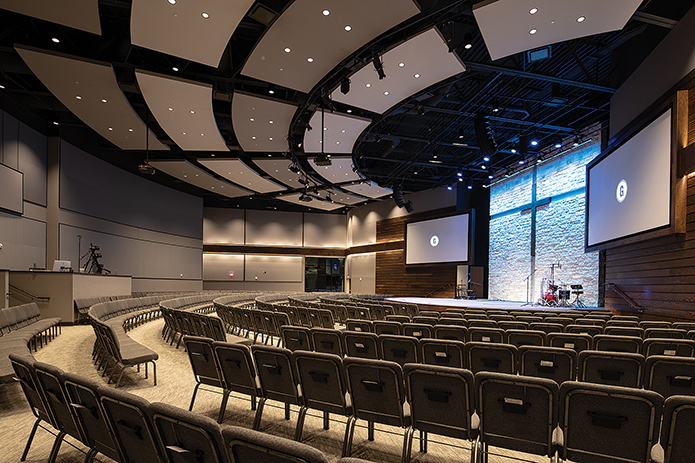
First, it meshed with Anderson’s entrepreneurial spirit, as the church was just beginning to focus on multi-site ministry. In the late 1990s, Grace Bible Church moved from its original campus in Bryan, where it had been since 1961, to Anderson Street in College Station. The Anderson campus was significantly renovated but ultimately lacked adequate lobby and common space.
With the renovation of the Southwood campus, Buck had some real-world experience to draw upon, having worked for a general contractor prior to seminary. He was also familiar with the shortcomings of the Anderson campus; so, when working with a different architect to renovate Southwood, there was an emphasis on vital lobby and common spaces..
With the successful completion of the Southwood campus renovation under his belt, Anderson learned an important lesson that he’d carry forward to future church building projects at Grace Bible Church.
“Professional expertise — planning with professionals — is just flat-out worth it,” he says. “You need to deal with people who do this every day.”
 Experience builds expertise
Experience builds expertise
Fifteen years later, Grace Bible Church has four functioning campuses and a fifth underway in nearby Bryan, Texas, which is scheduled to open next fall — directly across the street from the church’s very first building.
The most recently completed campus opened its door in 2019: the stunning Creekside location. With a creek running through the property, this campus isn’t just beautiful, but it literally sets the standard for the church’s multisite design model moving forward.
“Professional expertise — planning with professionals — is just flat-out worth it. You need to deal with people who do this every day.” — Buck Anderson
With disciple-making at its core, Grace Bible Church has plans to plant churches well beyond Texas. While looking at other opportunities within the Texas A&M System cities, the church has also sent teams to scope out other areas of the country to learn where it might be more effective in planting multiplying churches in cities with significant university settings. And ultimately, Grace wants to continue its efforts in planting churches according to a university-family model both domestically and abroad.
With a dual call of disciple-making and leadership development, the church has also developed a residency program for planters. Its multisite locations act as a tool for training men and women to ultimately staff an existing ministry or lead a new one.
“It’s interesting how the Creekside property serves as a metaphor for our work,” Anderson points out. “The stream of leadership development, the stream of discipleship and training. Foreign missions. Those streams all came together to form this ‘lake’ of this church planting idea that had always been here, but now more recently — in the last four or five years — has really began to take fruition.”
Since Creekside would be the ‘brand standard’ for future Grace Bible Church campuses, getting its design right would be essential. To achieve that level of success would require a well-established, nationwide leader in designing small and large multisite campuses. When a mutual seminary friend of his and Senior Pastor Fisher’s recommended Dallas-based HH Architects, Anderson says it was an easy call.
“They had a great eye for design and detail,” he explains. “We prioritized the price of professionalism because we knew it would save us money and time in the long run.”
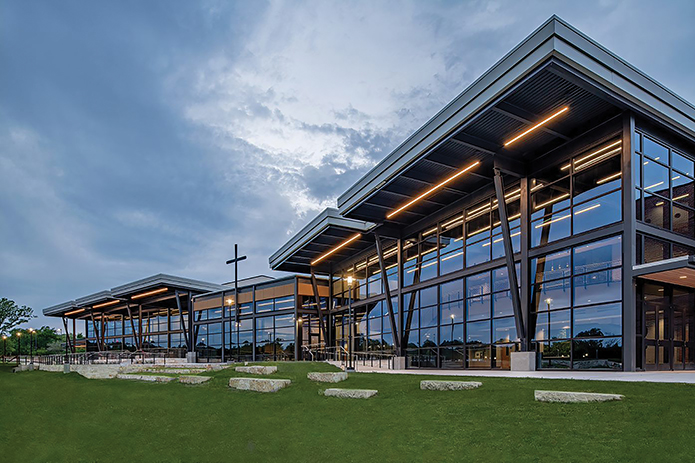
This depth of church design experience with HH Architects — particularly multisite design — was even more crucial considering the inherent challenges the Creekside property presented.
“It’s called Creekside because it’s located by a little river, with lots of surrounding trees and forest,” Anderson says. “It’s beautiful, but about half of the 40 acres are in the flood plain.”
The property houses cows as part of a leasing agreement with an agricultural company. A drainageway cuts the site diagonally in half. An active oil pad is adjacent to the property. This project would take finesse.
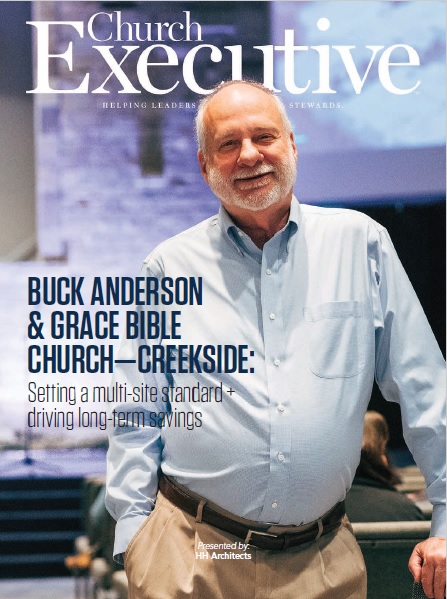
What Anderson needed was an experienced design partner [ HH Architects ] who could see beyond these obstacles to the natural beauty of the property. “The goal was to position the church in beautiful juxtaposition next to the creek,” he says. “We wanted to let the creek be the creek, but also show that there’s a church by the creek.”
Cost-effective, forward-looking
Experience with large church projects was another must, as Creekside spans 45,000 square feet and cost $14.2 million to build. It houses a worship center and a two-story education building with multi-level connecting hospitality lobbies and outdoor plazas nestled alongside the meandering creek.
It wouldn’t happen all at once, though; the project was envisioned in two phases from the start.
Initially, the church wanted a “gymnatorium” with 600 seats, with the future addition of a separate 1,000-seat worship auditorium. This 1,000-seat benchmark is in keeping with the church’s ministry formula.
“With the staff we have and our members — from children to junior high to high school to college, young adults, middle adults, older adults — a thousand seats is the level at which we can really pastor people, really care about them,” Anderson explains. “Our ideal look is a sophomore sitting next to a senior in church, with each of them learning from each other.”
QUICK FACTS ABOUT GRACE BIBLE CHURCH
Year established: 1961
Location of original campus: Bryan, TX
Number of locations: 5
Number of staff — full- and part-time: 68 / 39
Combined weekly attendance: 6,500
2021 budget: $8 million
As HH Architects learned more about this and the church’s other ministry goals, they helped leaders recalibrate. Giving them a smaller sanctuary and building a new, bigger one later didn’t make sense — once the future 1,000-seat worship center was finished, Grace Creekside would have little use for the 600-seat gymnatorium. With its poor room shape, difficult acoustic performance and high volume, a gym wasn’t conducive to any of the church’s future plans for its Creekside campus.
Instead, HH Architects suggested slightly oversizing the building, at minimal cost impact. This would enable the eventual expansion of the space from 600 seats to 1,000 without major construction. The church embraced this approach and dubbed it phase “1.5.”
To make it work, a 40-foot-high semicircular wall was built at the back of the sanctuary to right-size the space. Behind the walls, tiered seating is being put in place.
(This proved crucial when COVID hit and in-person worship fell drastically. “We didn’t want a few hundred people sitting in a room meant to hold a thousand,” Anderson explains. “That’s just a really bad ‘first date,’ right?”)
Additionally, cabling and wiring is already laid throughout the space to ensure the complete, 1,000-seat AVL experience.
On the first and second floors, additional punch-outs were made early to accommodate expanded children’s ministry classroom space in the coming years.
The same approach of laying the underground cabling and electric foundation — including plumbing — was applied in a greenspace next to the creek. In phase 2, it will house a 4,000-square-foot college and youth building.
Finally, an additional parking lot was constructed, with other spaces identified to accommodate future parking needs, and a fence was put up around the perimeter for safety.
A solid foundation for savings
As both Anderson and HH Architects knew going in, doing all this work upfront will drive substantial long-term cost savings for Grace Creekside.
“Basically, we’ve absorbed almost all the costs of preparation for Phase 2 in Phase 1,” Anderson points out.
To be fair, though, solid groundwork and thoughtful master planning weren’t enough to make this project a true success. It also required exceptional creativity and vision to take this gorgeous, but potentially difficult, piece of property and build a brand-standard church on it.
“HH Architects beautifully blended the rural landscape with the building and its look,” Anderson says. “They used a ton of glass in the foyer so that when you’re looking out of the foyer, you see the landscape. You see the creek. You see the forest in the background. If you look really hard, you might see some cows.
“They absolutely caught the vision of how to place a church by this creek,” he adds. “To me, it’s just beautiful.”


